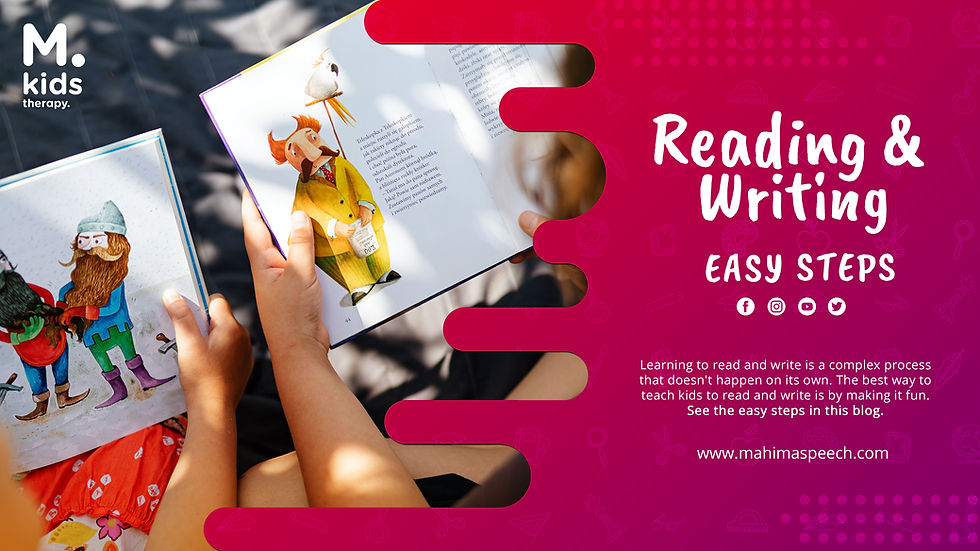Non Verbal Imitation: Fun activities
- Mahima Thomas

- Jul 10, 2020
- 2 min read
Updated: Jul 11, 2020

Non verbal imitation becomes the foundation of all things learnt. Clap your hands in front of your baby and they will try to copy you. Puff your cheeks and burst the bubble, they will imitate. It is the beginning of development for language, play and social skills. Generally a child will imitate non verbal skills before attempting the sounds.
A really great way to develop non verbal imitation is to start with hand play songs or actions songs. These help your child to copy your actions without actually putting together the words. Later on, they will try the sounds. Rope in siblings to encourage more imitation and provide reinforcements.

A few pointers to keep in mind when you try non verbal imitation is
· Work on the large motor movements initially like arms and legs and then move on to move finer movements.
· Start with one step imitation tasks and then advance
· Use identical objects that the child has to help imitation
· Be enthusiastic and have fun to spark your child's interest
Here are a few fun games to help your child start off the imitation game
1. Place different objects on the table and bang on them. Encourage your child to do the same

2. Play “Jump in”. Place different shapes on the floor and jump on each. Let your child follow suit
3. The frog game: Scatter leaf shapes on the floor. Act like a frog, croak and jump on each

4. Imitate your child. Every time your child does an action imitate them and they will start making more gestures for you to imitate
5. Freeze! Start on the music and dance, as soon as the music is off Freeze!
6. Draw a line on the floor, divide it like land and water. Jump on land and in water.
7.Use gloves or socks to make hand puppets. Stick on eyes and nose and make faces, happy, sad, angry, sleepy.

Follow your child’s lead. Research has shown that when children are given the lead role they tend to imitate better. Actions can then be strategically used to help improve their non verbal imitation.



Comments